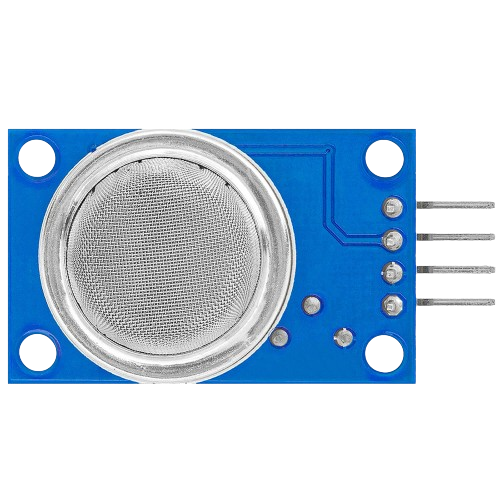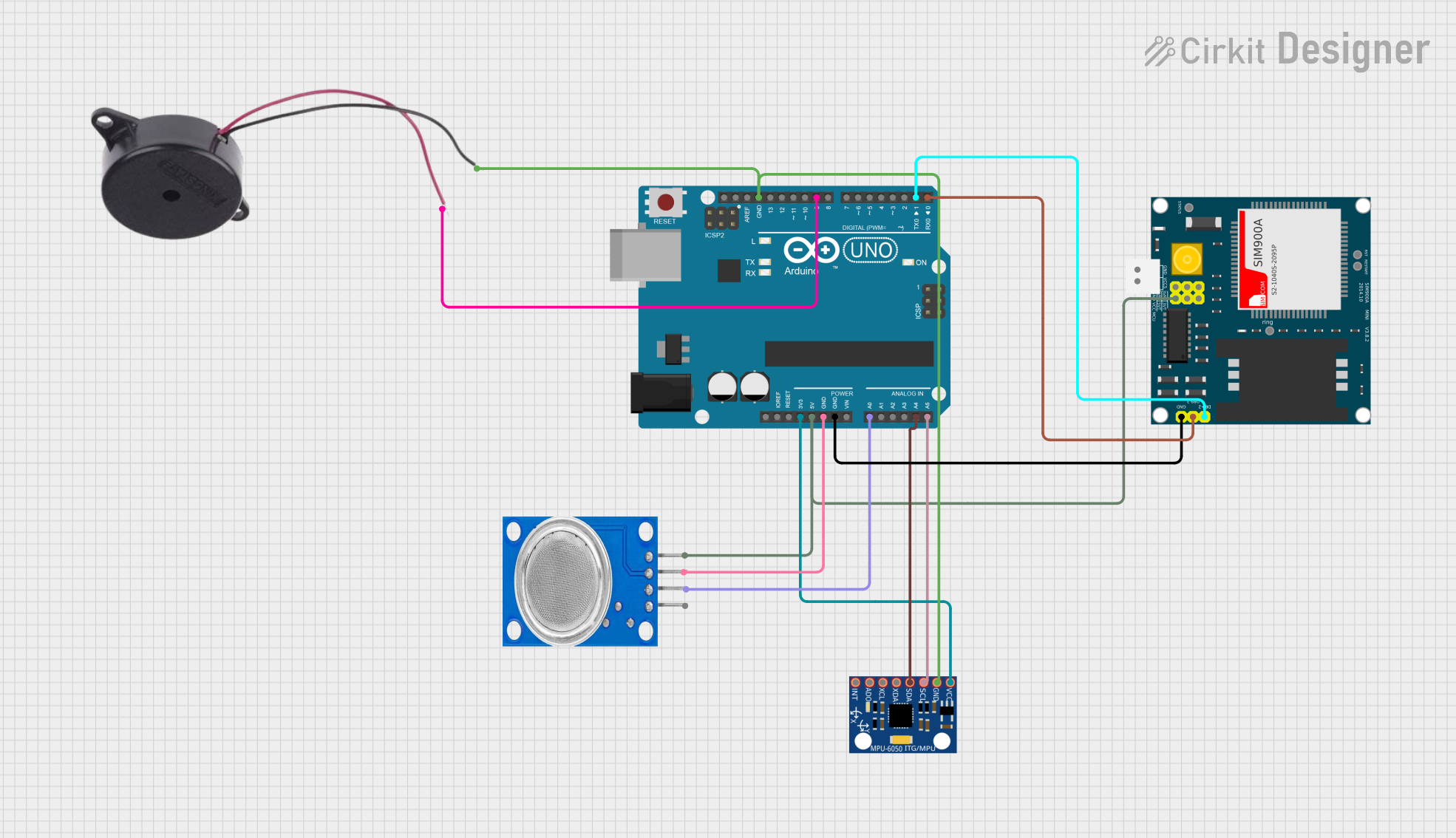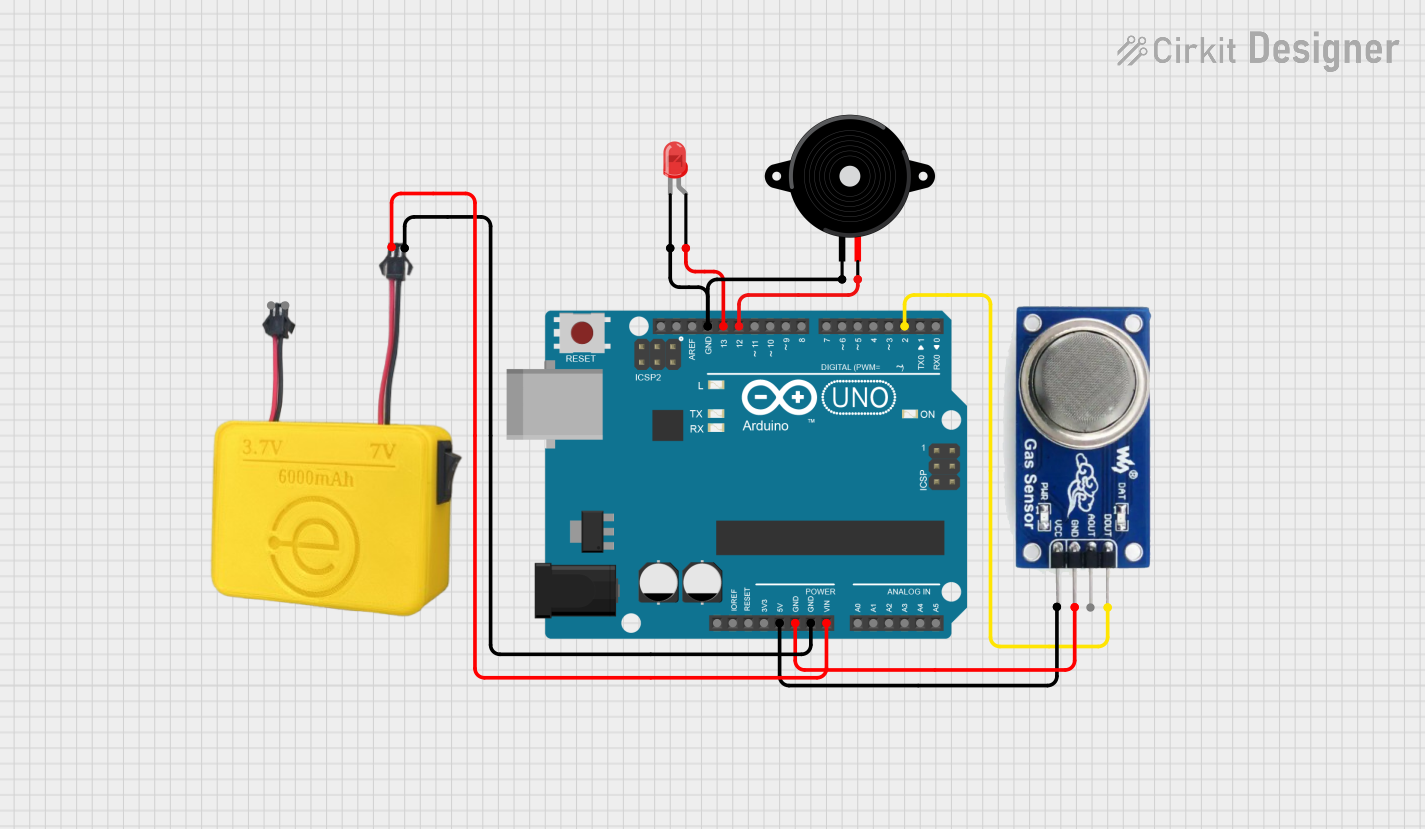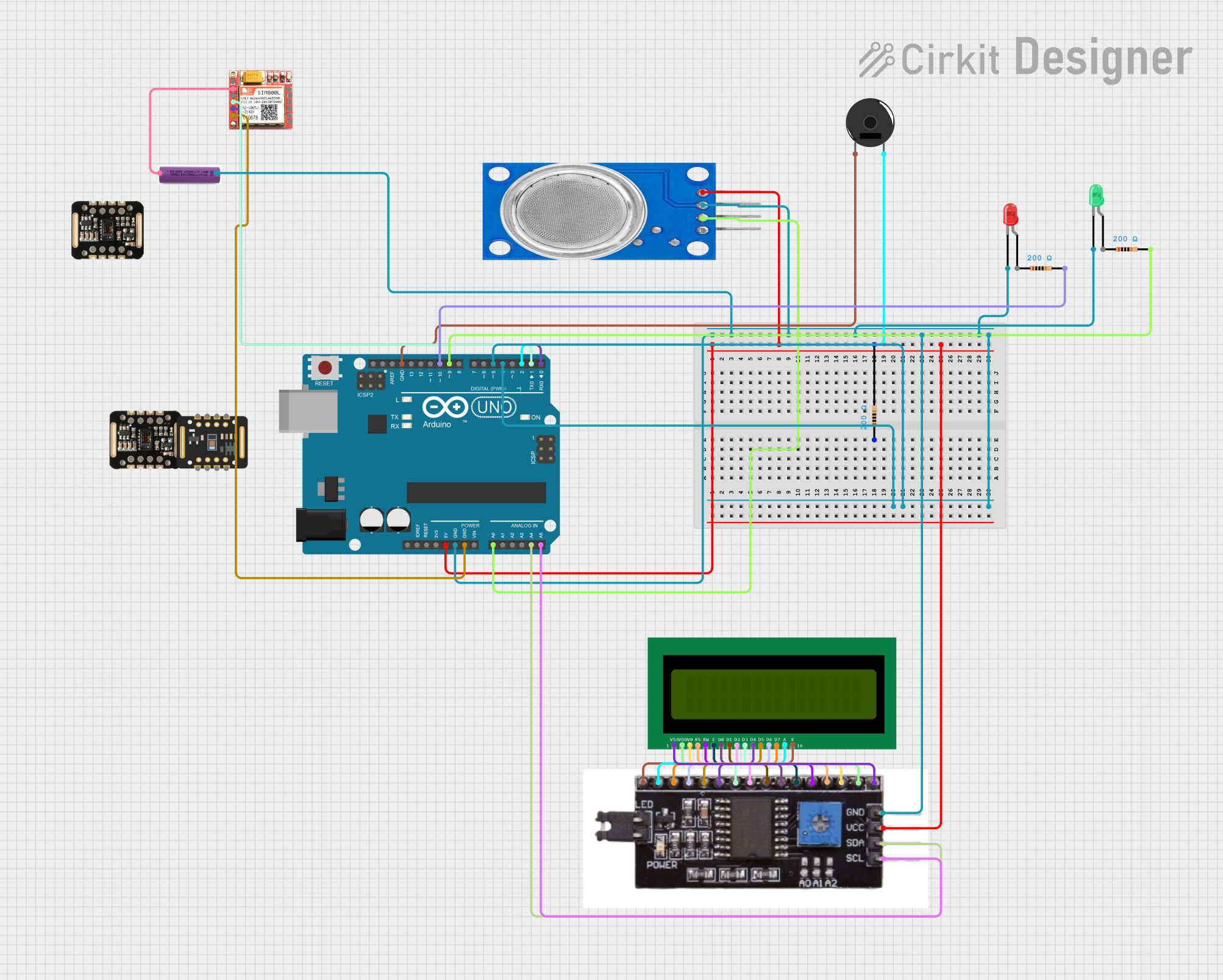
How to Use MQ135: Examples, Pinouts, and Specs

 Design with MQ135 in Cirkit Designer
Design with MQ135 in Cirkit DesignerIntroduction
The MQ135 is a versatile and sensitive gas sensor capable of detecting a wide range of gases including ammonia (NH3), nitrogen oxides (NOx), alcohols, aromatic compounds, sulfides, and carbon dioxide (CO2). Due to its sensitivity and fast response time, it is widely used in both indoor and outdoor air quality monitoring systems. Common applications include environmental monitoring, air purifiers, ventilation systems, and smart home devices for ensuring the safety and well-being of occupants.
Explore Projects Built with MQ135

 Open Project in Cirkit Designer
Open Project in Cirkit Designer
 Open Project in Cirkit Designer
Open Project in Cirkit Designer
 Open Project in Cirkit Designer
Open Project in Cirkit Designer
 Open Project in Cirkit Designer
Open Project in Cirkit DesignerExplore Projects Built with MQ135

 Open Project in Cirkit Designer
Open Project in Cirkit Designer
 Open Project in Cirkit Designer
Open Project in Cirkit Designer
 Open Project in Cirkit Designer
Open Project in Cirkit Designer
 Open Project in Cirkit Designer
Open Project in Cirkit DesignerTechnical Specifications
Key Technical Details
- Detection Gas: Ammonia, Nitrogen oxides, Alcohols, Aromatic compounds, Sulfides, Carbon dioxide
- Concentration Range: 10 to 1000 ppm (parts per million) for various gases
- Preheat Duration: 20 seconds
- Supply Voltage: 5V ± 0.1
- Output Voltage: 0.1-0.3V (clean air baseline), up to 5V depending on gas concentration
- Load Resistance: Adjustable
- Operating Temperature: -20°C to 50°C
- Heater Power Consumption: Approx. 800mW
Pin Configuration and Descriptions
| Pin Number | Pin Name | Description |
|---|---|---|
| 1 | VCC | Power supply (5V) |
| 2 | GND | Ground |
| 3 | DOUT | Digital output (TTL logic level) |
| 4 | AOUT | Analog output (Voltage proportional to gas concentration) |
Usage Instructions
Integration with a Circuit
- Power Supply: Connect the VCC pin to a 5V power supply and the GND pin to the ground.
- Signal Output: The MQ135 provides both digital and analog outputs:
- Digital Output (DOUT): Connect to a digital input pin on your microcontroller. The digital output goes high when the gas concentration exceeds a certain threshold, which can be adjusted using the onboard potentiometer.
- Analog Output (AOUT): Connect to an analog input pin for reading the variable voltage that corresponds to the gas concentration.
Important Considerations and Best Practices
- Calibration: The MQ135 sensor requires calibration to establish a baseline for clean air. This is typically done by adjusting the onboard potentiometer until the digital output switches from high to low in a clean air environment.
- Preheating: Allow the sensor to preheat for at least 20 seconds to stabilize the readings.
- Temperature and Humidity: Be aware that the sensor's readings can be affected by temperature and humidity. Compensate for these factors in your application if precise measurements are required.
- Avoid Contaminants: Keep the sensor away from organic solvents, oils, and other contaminants to prevent sensor poisoning.
Example Code for Arduino UNO
// MQ135 Gas Sensor with Arduino UNO
int analogPin = A0; // Analog input pin connected to AOUT on the MQ135
int digitalPin = 2; // Digital input pin connected to DOUT on the MQ135
int sensorValue = 0; // Variable to store the sensor value
void setup() {
pinMode(digitalPin, INPUT); // Set the digital pin as input
Serial.begin(9600); // Start serial communication at 9600 baud
}
void loop() {
sensorValue = analogRead(analogPin); // Read the analog value from sensor
Serial.print("Gas concentration: ");
Serial.println(sensorValue); // Print the sensor value to the serial monitor
// Check the digital pin for threshold exceedance
if (digitalRead(digitalPin) == HIGH) {
// Gas concentration is above the threshold
Serial.println("Gas level is high!");
} else {
// Gas concentration is below the threshold
Serial.println("Gas level is normal.");
}
delay(1000); // Wait for 1 second before reading again
}
Troubleshooting and FAQs
Common Issues
- Inaccurate Readings: If the sensor provides inconsistent or inaccurate readings, ensure that it has been properly calibrated and that there are no environmental factors such as temperature or humidity affecting the sensor.
- No Response: If the sensor does not respond, check the power supply and wiring connections. Ensure that the sensor has been preheated for the recommended duration.
Solutions and Tips
- Calibration: Perform calibration in a well-ventilated area to establish a baseline for clean air.
- Sensor Lifespan: The MQ135 sensor has a lifespan of around 2 years when used continuously. Replace the sensor after this period or if it shows signs of degradation.
- Avoid High Concentrations: Prolonged exposure to high concentrations of gas can saturate the sensor and shorten its lifespan.
FAQs
Q: Can the MQ135 detect CO2 accurately? A: The MQ135 can detect CO2, but it is not a dedicated CO2 sensor. For precise CO2 measurements, a specialized infrared CO2 sensor is recommended.
Q: How do I adjust the sensitivity of the digital output? A: Use the onboard potentiometer to adjust the threshold for the digital output. Turn it clockwise to increase sensitivity and counterclockwise to decrease it.
Q: Is the MQ135 sensor suitable for outdoor use? A: While the MQ135 can be used outdoors, it should be protected from water, dust, and direct sunlight to ensure accurate readings.